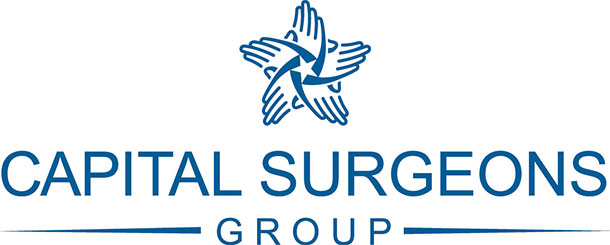Cholecystectomy
Surgical Removal of the Gallbladder
Cholecystectomy also known as gallbladder removal surgery, is the surgical removal of the gallbladder. The gallbladder is a small, pear-shaped organ that stores bile, a digestive fluid produced by the liver. Bile helps to break down fats in food. The gallbladder is located on the underside of the liver, on the right side of the abdomen.
When is Cholecystectomy Recommended?
Cholecystectomy is usually recommended for people with gallstones that are causing symptoms. These symptoms may include:
- Severe abdominal pain in the upper right side
- Nausea and vomiting
- Jaundice (yellowing of the skin and eyes)
- Fever and chills
Cholecystectomy may also be recommended for people with:
- Gallbladder inflammation (cholecystitis)
- Gallbladder infection (cholecystitis)
- Gallbladder polyps
- Pancreatitis (inflammation of the pancreas)
- Preoperative Preparation>
Before undergoing cholecystectomy, patients undergo a thorough evaluation to assess their overall health and determine if they are suitable for surgery. This may involve blood tests, imaging studies, and consultations with specialists. Patients are also advised to stop smoking and adjust their medications as needed.
Procedure
Cholecystectomy is usually performed under general anesthesia, which means you will be asleep during the surgery. The type of anesthesia used will depend on your individual needs and preferences.
During a laparoscopic cholecystectomy, the surgeon will make three to four small incisions in the abdomen. A laparoscope, a thin, lighted tube with a camera, is inserted through one of the incisions. The camera allows the surgeon to see inside the abdomen and guide surgical instruments to remove the gallbladder.
Advanced Laparoscopic and Robotic Cholecystectomy
Robotic cholecystectomy, a newer technique, offers enhanced precision and control during surgery. The surgeon manipulates the robotic arms from a console, allowing for greater dexterity and minimizing hand tremors. This approach is particularly beneficial for patients with complex anatomy or those who have undergone previous abdominal surgeries.
Capital Surgeons Group is a leading provider of advanced laparoscopic and robotic cholecystectomy. Our surgeons are highly experienced and skilled in performing these minimally invasive procedures, which offer numerous benefits over traditional open cholecystectomy.
Benefits of laparoscopic and robotic cholecystectomy include:
- Smaller incisions, resulting in less scarring
- Reduced pain
- Shorter recovery time
- Faster return to normal activities
- Recovery
After cholecystectomy, most patients experience some pain and discomfort, which can be managed with pain medication. Patients are typically discharged from the hospital within 1-2 days and can resume normal activities within a few weeks.
Complications
Cholecystectomy is a relatively safe procedure, but complications can occur, such as bleeding, infection, and bile duct injury. These complications are more common in open cholecystectomy compared to laparoscopic cholecystectomy.
Long-term Outcomes
After cholecystectomy, most patients experience relief from their gallbladder symptoms and do not experience any long-term complications. The body adapts to the absence of the gallbladder, and digestion continues normally.
Cholecystectomy is an effective treatment for gallbladder problems, providing relief from pain and discomfort and preventing complications. With advancements in surgical techniques, laparoscopic and robotic cholecystectomy have become the preferred approaches, offering minimally invasive options with reduced recovery times.
If you are considering cholecystectomy, Capital Surgeons Group is here to help. Our experienced surgeons will work with you to develop a personalized treatment plan that is right for you. Contact us today to schedule a consultation.
Gallbladder Disease & Cholecystectomy: What You Need to Know
Laparoscopic Cholecystectomy
Explore the hidden details of laparoscopic cholecystectomy, a cutting-edge approach to gallbladder removal. Discover the benefits of this minimally invasive technique, and learn what to expect throughout your surgical journey. [...]
Da Vinci Robotic Cholecystectomy
Experience advanced care through Da Vinci Robotic Cholecystectomy, a cutting-edge solution leading the way in medical innovation. Ensuring precision and effectiveness, it stands at the forefront of treating Gallbladder Disease. [...]
Benefits of Cholecystectomy
Discover the transformative benefits of cholecystectomy, a surgical solution offering relief from gallbladder pain, prevention of recurrent gallstones, and improved digestive health. Explore the holistic enhancements to quality of life. [...]
Understanding
Gallbladder Disease
Discover the complexities of gallbladder disease and learn how Capital Surgeons Group stands out in its expertise, providing unparalleled understanding, precise diagnosis, and effective treatment for this widespread ailment. [...]
Cholecystectomy:
Gallbladder Removal Surgery
Advancements in surgical techniques have made cholecystectomy a highly effective treatment for gallbladder problems. Explore minimally invasive options like laparoscopic and robotic cholecystectomy for faster recovery and improved outcomes. [...]



